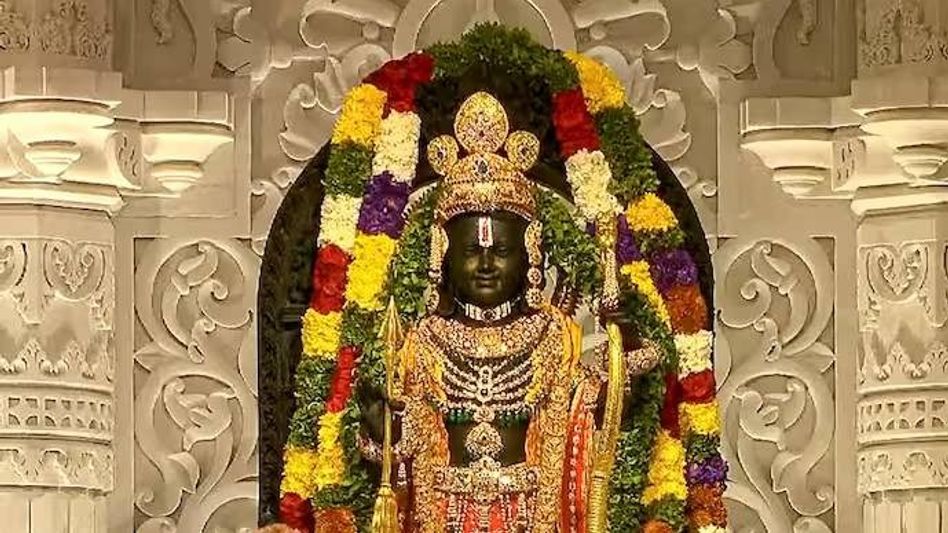Ram Lalla idol in Ayodhya temple named as 'Balak Ram'
The idol of Lord Ram, whose consecration was done at the grand Ram Temple in Ayodhya on Monday will be known as 'Balak Ram' as it depicts the deity as a five-year-old boy in a standing posture.

The idol of Lord Ram, whose consecration was done at the grand Ram Temple in Ayodhya on Monday will be known as 'Balak Ram' as it depicts the deity as a five-year-old boy in a standing posture, a priest associated with the 'Pran Pratishtha' ceremony told news agency PTI.
"The Ram Lalla idol that was consecrated on January 22 has been named as 'Balak Ram'. The reason for naming the idol of Lord Ram as 'Balak Ram' is that he resembles a child, whose age is five years," Arun Dixit, a priest associated with the consecration ceremony told PTI.
"The first time I saw the idol, I was thrilled and tears started rolling down my face. I cannot explain the feeling I experienced then," he said.
The Varanasi-based priest, who has conducted nearly 50 to 60 consecrations, said the Ram Lalla idol's 'Pran Pratishtha' was the most "divine" and "supreme" for him.
"Of all the consecrations (I have) performed so far, this is the most 'alaukik' (divine) and 'sarvoch' (supreme) for me," Dixit said.
He further said he had his first glimpse of the idol on January 18. The idol, measuring 51 inches, was chiselled by Mysuru-based sculptor Arun Yogiraj.
In a grand ceremony, Prime Minister Narendra Modi led the 'Pran Pratishtha' ceremony at the newly-built Ram Temple. He performed the consecration in the 84-second 'muhurta' and before that, he partook in rituals with RSS chief Mohan Bhagwant by his side.
Over 7,000 guests, including celebrities, sportspersons, businessmen and industrialists, were present at the star-studded function.
The Ram Lalla idol chiselled by Yogiraj has been carved out of a three billion-year-old rock. The azure-coloured Krishna Shile (black schist) was excavated from Gujjegowdanapura village in Mysuru. It is a fine-to-medium-grained, sky-blue metamorphic rock, generally called soapstone because of its smooth surface texture and is ideal for sculptors to carve idols.
The idol is made of Banarasi fabric, featuring a yellow dhoti and a red 'pataka' or 'angavastram'. The 'angavastram' is embellished in pure gold 'zari' and threads, featuring auspicious Vaishnav symbols -- 'shankh', 'padma', 'chakra' and 'mayur'.
While the ornaments have been crafted by Ankur Anand's Lucknow-based Harsahaimal Shiamlal Jewellers, the garments were created by Delhi-based textile designer Manish Tripathi, who worked from Ayodhya Dham for the project.
Copyright©2025 Living Media India Limited. For reprint rights: Syndications Today









